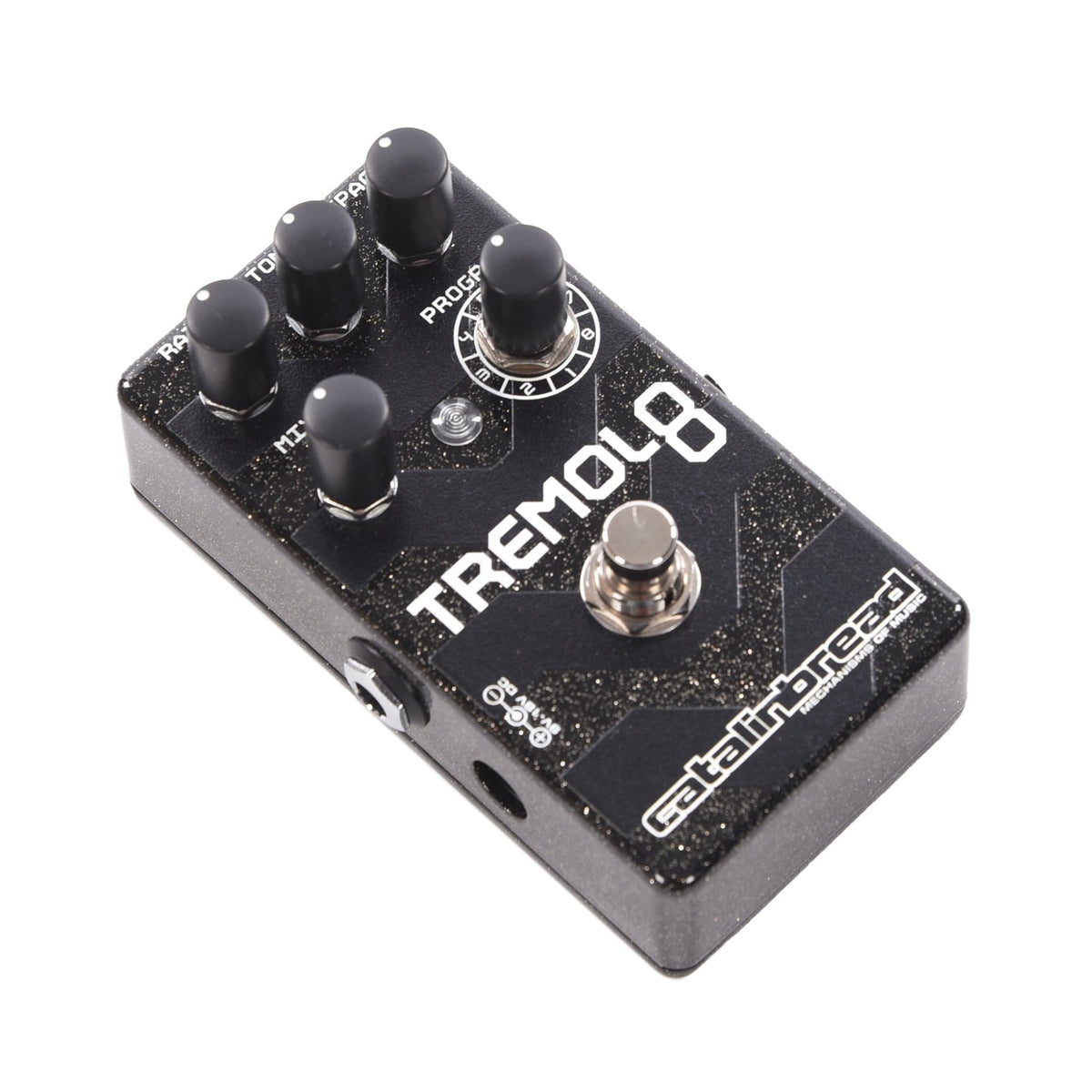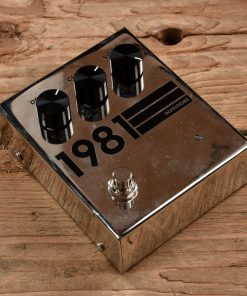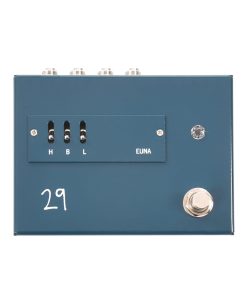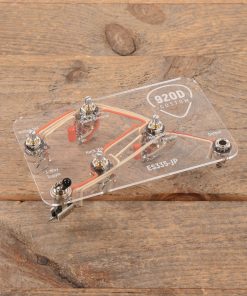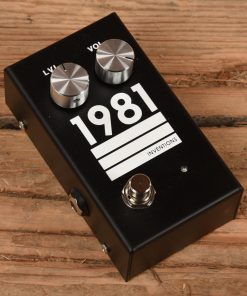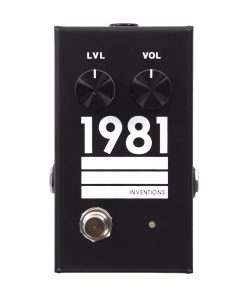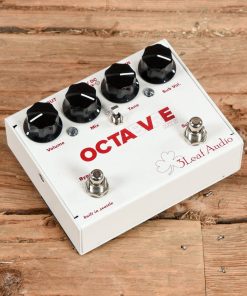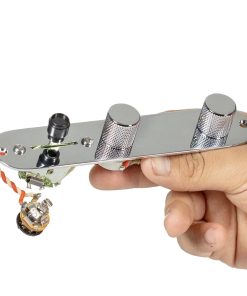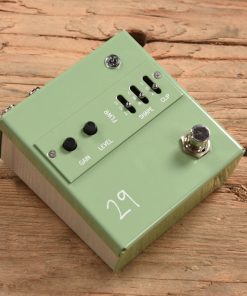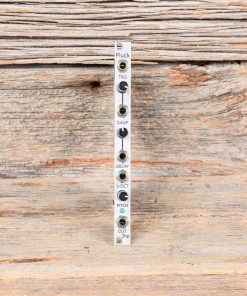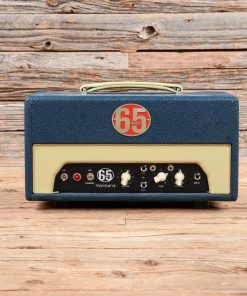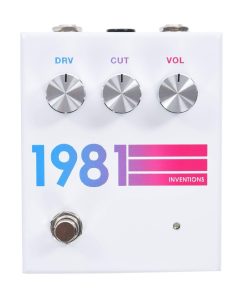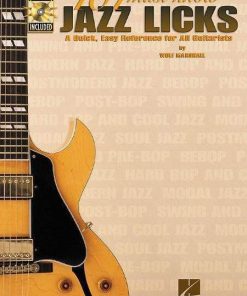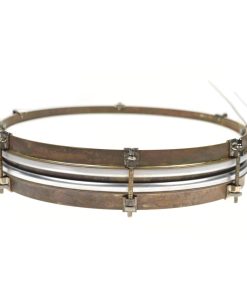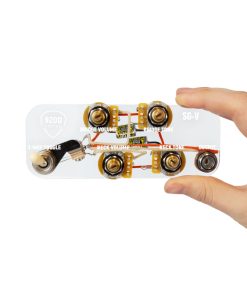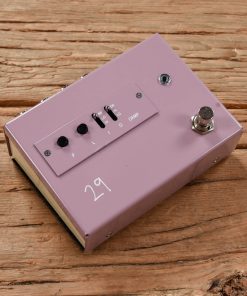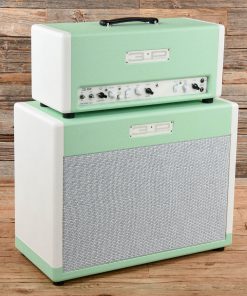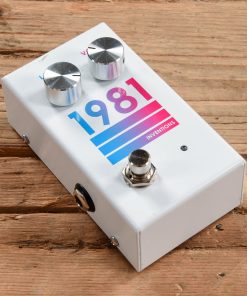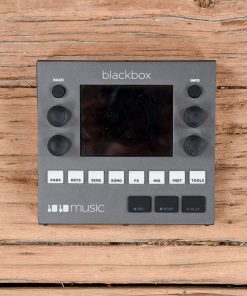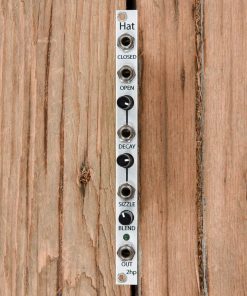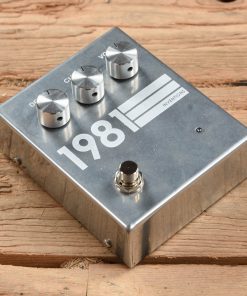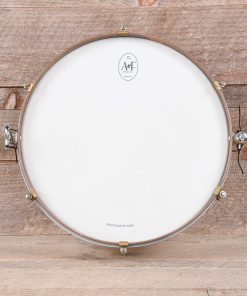Catalinbread Tremolo 8 Pedal Catalinbread
$ 164,99 $ 66,00
In a past life, this project started as a pedal for our personal enjoyment; a digitized model of the Fender Showman’s “harmonic vibrato”. The experiment was a resounding success, so we started experimenting with more LFOs and more tremolo styles. we really like the sound of tremolo splashing against a reverb like Magnatones or Vibro Champs and our previous work on the Topanga Burnside reflects this. At the same time, we’re a sucker for bigger ethereal reverbs so we decided to add some trem-specific reverb algorithms and a subtle tone control. After researching and implementing them to exhaustion, we discovered that not all LFOs are created equal and some are much more equal than others. A sawtooth LFO leads to wild reverse-esque sonic manipulation and a fluttery compressed sound when set low. A square wave with a duty cycle control (“on” time) leads to a thumping, stuttering reverb sound, so why not turbocharge the square wave to a few kilohertz and churn out some wacky sum and difference frequencies? In a completely different program, trem modulation with chorus floating on top sounded too good to leave out. When working on the Many Worlds we had so much fun with the envelope-controlled phase angle that we wanted something like that in here, so we crafted an envelope-controlled trem rate with adjustable sensitivity and attack/decay, leading to head-spinning effects when letting chords ring out or when cranking some touch-sensitive solos.
The Tremolo8 runs from 9 to 18 volts using a standard DC center-negative power supply for pedals. Make sure you’re using a supply that provides at least 60mA. Running the Tremolo8 at 9V will sound great, but if you want a bit more output, a dry signal boost and increased headroom, try any voltage you like up to 18V! The Tremolo8 does not run on batteries.
Fast Shipping with Professional Packaging
We offer a wide range of shipping options due to our long-standing partnerships with UPS, FedEx and DHL. Our warehouse staff are trained to pack your goods exactly according to the specifications we offer. Before shipping the goods are thoroughly examined and secured. Every day, we send thousands of packages to clients from all over the world. Our determination to be the biggest online retailer in the world is shown by this. The warehouses are located in Europe as much as they are in USA.
Note: Orders with more than one product will be assigned a distinct processing time, dependent on the particular item.
Before shipping, we will examine the items ordered thoroughly before sending the items. The majority of orders are shipped within 48 hrs. The delivery estimate is between 3-7 days.
Returns
The stock is constantly changing and cannot be fully controlled by us because of the involvement of several parties including the factory and our warehouse. Stock levels can fluctuate at any given time. Please be aware that it is possible that your order could become unavailable even after you've placed your order.
Our policy is valid for a period of 30 days. If 30 days have passed by since your purchase however, we're unable to give an exchange or refund.
In order to be eligible for a refund your product must be unopened and in the same state as you received it. It should also be in the original package.
Related products
Effects and Pedals / Wahs and Filters
Parts / Amp Parts
920D Custom LP50-SPLIT Les Paul Wiring Harness Upgrade w/Coil Split Mod 920D Custom
Accessories / Books and DVDs
Effects and Pedals / Overdrive and Boost
Effects and Pedals / Overdrive and Boost
Parts / Amp Parts
920D Custom ES335-JP Wiring Harness for Gibson/Epiphone ES-335 w/Four Push/Pulls 920D Custom
Accessories / Books and DVDs
Effects and Pedals / Overdrive and Boost
Drums and Percussion
20″ Craig Lauritsen Custom Rustico Crash Ride Cymbal USED Chicago Music Exchange
Effects and Pedals / Overdrive and Boost
Effects and Pedals / Octave and Pitch
Effects and Pedals / Overdrive and Boost
1981 Inventions DRV Overdrive Black Hyperfade 1981 Inventions
Effects and Pedals / Overdrive and Boost
Keyboards and Synths / Synths / Eurorack
Amps / Guitar Heads
Effects and Pedals / Overdrive and Boost
1981 Inventions DRV Overdrive White Hyperfade 1981 Inventions
Accessories / Books and DVDs
Accessories / Merchandise
Effects and Pedals / Wahs and Filters
Drums and Percussion / Acoustic Drums / Snare
A&F Drum Co. 1.75×14 Pancake Raw Brass Snare Drum A&F Drum Co.
Drums and Percussion / Acoustic Drums / Full Acoustic Kits
Parts / Amp Parts
Parts / Amp Parts
920D Custom JB-CON-CH-BK Upgraded Replacement ’62 Jazz Bass Concentric Control Plate 920D Custom
Amps / Guitar Combos
Effects and Pedals / Preamps
Amps / Guitar Cabinets
3rd Power Amplification Dual Citizen 2-Channel 40-Watt Head w/ 2×12 Cab 3rd Power Amplification
Effects and Pedals / Overdrive and Boost
Effects and Pedals / Controllers, Volume and Expression
Keyboards and Synths / Synths / Eurorack
Effects and Pedals / Overdrive and Boost
Drums and Percussion / Acoustic Drums / Snare
A&F Drum Co. 1.75×14 Pancake Raw Brass Snare Drum A&F Drum Co.

